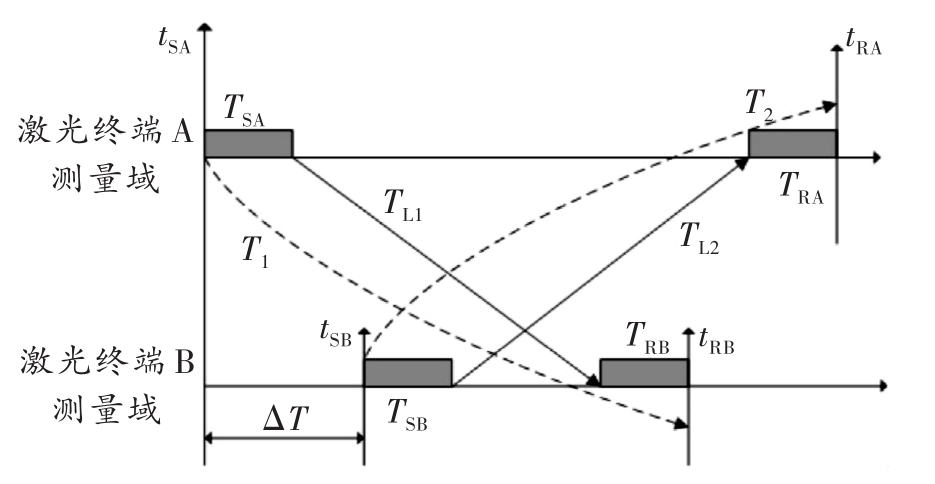Xi WANG, Lei DENG, Kunyu TAO, Sen FU, Qi YANG, Xiaoxiao DAI, Zhewei CAO, Qin SHEN, Chen LIU, Songnian FU. Research on the Integration of Space Laser Communication and Ranging[J]. Study On Optical Communications, 2024, 50(3): 23001601
Search by keywords or author
- Study On Optical Communications
- Vol. 50, Issue 3, 23001601 (2024)

Fig. 1. Dual one way ranging schematic diagram

Fig. 2. The block diagram of the overall system
Fig. 3. The block diagram of system main function module
Fig. 4. The test diagram of the real-time communication ranging integrated system
Fig. 5. BER and signal constellation of the transmission experiment
Fig. 6. Ranging images under different modulation formats and rates
Fig. 7. Simulation flow chart
Fig. 8. Frequency/phase discrimination sampling waveform and filtered waveform
Fig. 9. Waveform and zero-crossing decision after frequency/phase discrimination filtering
Fig. 10. Relative error of frequency/phase discrimination
|
Table 1. Ranging accuracy under different modulation formats and rates
|
Table 2. The performances of the proposed method and the existing reports

Set citation alerts for the article
Please enter your email address



